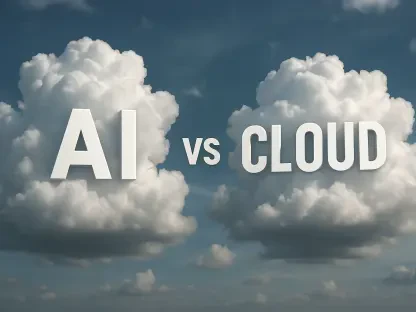In an era where digital security faces unprecedented challenges, quantum computing emerges as a formidable threat to traditional encryption methods, capable of unraveling the safeguards that protect sensitive data worldwide. This looming danger, though not yet fully realized, raises a critical question: how can organizations shield their information from future quantum attacks? Google Cloud has stepped into this arena with innovative tools designed to counter such risks, offering a glimpse into a proactive defense strategy. This research summary explores Google Cloud’s latest advancements in post-quantum encryption, delving into their significance, technical underpinnings, and broader implications for cybersecurity.
Unveiling Google Cloud’s Post-Quantum Encryption Tools
Google Cloud has recently enhanced its Key Management Service (Cloud KMS) by introducing post-quantum encryption options, a pivotal move aimed at safeguarding sensitive data against the potential of quantum computing threats. These tools, currently available in preview mode, target the protection of information that requires long-term confidentiality, such as financial records and personal data. By integrating advanced cryptographic techniques, Google Cloud is addressing a future where quantum computers could break conventional encryption standards with ease.
A pressing concern these tools aim to mitigate is the “Harvest Now, Decrypt Later” attack strategy, where adversaries collect encrypted data today to decrypt it once quantum technology becomes accessible. This risk underscores the urgency of adopting forward-thinking security measures, especially for industries handling data with extended shelf life. Google Cloud’s initiative represents a critical step in preempting such vulnerabilities, ensuring that data remains secure even as computational capabilities evolve.
The Growing Urgency of Quantum Threat Preparedness
The advent of quantum computing threatens to undermine current encryption protocols, which rely on the computational difficulty of certain mathematical problems—problems that quantum systems could solve exponentially faster. Although fully operational quantum computers capable of breaking these codes are not yet a reality, experts stress that preparation cannot wait. The potential for adversaries to store data now for future decryption drives the need for immediate action across sectors.
Insights from industry specialists highlight the critical nature of early adoption of post-quantum cryptography, despite its complexities. Brent Muir, a principal consultant at Google Cloud, emphasizes that data with enduring confidentiality requirements must be protected now to avoid catastrophic breaches later. Alarmingly, data cited by privacy specialist Toyosi Kuteyi reveals that only 9% of organizations have a defined post-quantum roadmap, with many still underestimating their exposure to this emerging threat.
This lack of readiness points to a broader gap in awareness and action, as numerous entities remain in the evaluation phase or mistakenly believe they are not targets. The consensus among security professionals is clear: transitioning to quantum-resistant encryption is not a luxury but a necessity. Delaying such measures could leave critical systems vulnerable to exploitation in the coming years.
Technical Innovations and Challenges in Post-Quantum Encryption
Methodology and Tools
Google Cloud’s approach to post-quantum encryption leverages cutting-edge Key Encapsulation Mechanisms (KEMs) such as ML-KEM-768 and ML-KEM-1024, which adhere to standards set by the US National Institute of Standards and Technology (NIST). These mechanisms are designed to secure data against the computational power of quantum machines by using mathematical problems resistant to quantum algorithms. Additionally, a hybrid solution named X-Wing combines classical and post-quantum algorithms, offering a versatile option for general-purpose applications.
To facilitate seamless integration, Google Cloud employs Hybrid Public Key Encryption (HPKE) through its open-source Tink library, providing developers with standardized tools to incorporate these advanced cryptographic methods. This approach minimizes disruption to existing systems while enhancing security. The focus on standardization ensures that businesses can adopt these solutions without overhauling their entire infrastructure.
Findings and Implementation Hurdles
Integration of post-quantum tools through the Cloud KMS API marks a significant advancement, with Google Cloud committing to embedding these algorithms across its infrastructure by 2026. This timeline reflects a strategic rollout to balance innovation with stability, ensuring that systems remain robust during the transition. Updates to cryptographic libraries like BoringCrypto further support this shift, with plans to expand compatibility across various programming languages later this year.
However, the adoption of post-quantum encryption is not without obstacles, as the larger key sizes and ciphertexts inherent to these algorithms can strain system performance. Environments with constrained bandwidth or storage capacity may experience noticeable impacts, necessitating careful planning during implementation. Google Cloud advises organizations to assess their infrastructure for compatibility to mitigate potential bottlenecks.
Implications for Security and Industry
The deployment of these tools by Google Cloud holds profound implications for data security, positioning the company as a leader in establishing benchmarks for quantum resilience. By offering accessible post-quantum encryption, Google Cloud not only protects its clients but also influences industry-wide standards, encouraging others to follow suit. This proactive stance could redefine how sensitive information is safeguarded in a quantum era.
On a broader scale, the industry’s insufficient preparedness remains a glaring issue, with many organizations lagging in actionable strategies. The transition from mere evaluation to implementation is crucial, as awareness alone cannot shield against future risks. Google Cloud’s efforts underscore the importance of moving beyond theoretical discussions to practical solutions, urging businesses to prioritize quantum threat mitigation.
Reflection and Future Directions
Reflection
Google Cloud’s forward-looking approach to post-quantum cryptography demonstrates a commendable balance between pioneering innovation and addressing the inherent complexities of adoption. The introduction of standardized solutions and open-source tools like Tink reflects a commitment to accessibility, easing the burden on developers and businesses. This strategy showcases an understanding that security must evolve alongside technological advancements.
Nevertheless, challenges such as architectural adjustments and performance constraints persist, particularly in resource-limited settings. Google Cloud is tackling these issues by aligning with NIST standards and providing hybrid options to maintain functionality during the transition. Such efforts highlight the delicate interplay between cutting-edge security measures and practical usability, a balance that will define the success of these initiatives.
Future Directions
Looking ahead, expanding support for post-quantum algorithms across additional programming languages presents a promising avenue for enhancing adoption. Further updates to cryptographic libraries like BoringCrypto and Tink could streamline integration, making these tools more accessible to diverse development environments. Continuous refinement of these resources will be essential to keep pace with evolving threats.
Equally important is fostering industry-wide collaboration to bridge the readiness gap, as collective action can accelerate the development of comprehensive post-quantum roadmaps. Raising awareness about the urgency of quantum threats remains a priority, encouraging organizations to invest in robust strategies. Joint efforts between tech leaders, policymakers, and businesses could pave the way for a more secure digital landscape.
Securing Tomorrow: Google Cloud’s Vision for Quantum Resilience
Google Cloud’s pioneering work in post-quantum cryptography proves instrumental in laying the groundwork for combating future quantum threats. The integration of advanced encryption tools within Cloud KMS highlights a forward-thinking approach to data protection. This initiative not only addresses immediate security needs but also sets a precedent for industry standards in quantum resilience.
Moving forward, actionable steps include accelerating the adoption of post-quantum encryption across sectors, with organizations encouraged to assess their vulnerabilities and implement robust solutions. Collaborative frameworks involving technology providers and regulatory bodies offer a pathway to standardize preparedness efforts. By prioritizing such measures, the industry can build a fortified defense against the quantum challenges that lie ahead.









